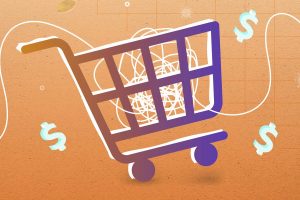My 2-part strategy for handling 'social spending' pressure in a post-COVID world

Welcome to Personal Finance Insider, a biweekly newsletter that connects you with the stories, strategies, and tips you need to be better with money.
Here’s what: The return of ‘social spending’ is upon us
I’m starting to see a bright light at the end of this pandemic chapter. I hope you are, too.
Sometime this year, we’ll be able to freely visit family, travel, and have a social life again. How wonderful! Just the thought of that is energizing. But then, anxiety creeps in.
Popular Articles
Post-pandemic life, experts predict, could be like the roaring ’20s all over again: indulgent and prosperous. Before long, the pull of restaurants, bars, and birthday parties will be too attractive to resist. What I call “social spending” will resume.
There are two kinds of social spending, in my experience. One is mindless spending, which often happens when we’re distracted in a group setting (“let’s get another round!”). The other is feeling pressured to buy something in lockstep with the group, whether it’s dinner or a bachelorette weekend. Both mean you’re spending more than you intend to, and can easily divert you from your bigger financial goals.
I’ve never felt more in control and conscious of my spending than during the pandemic. The anxiety arises when I realize how easy it can be to lose my grip. So as we inch closer to normalcy, my antidote to social spending is twofold: uphold my value list and beef up my cash reserves.
My value list is made up of things that make my life better — good mental and physical health, quality time with my closest family and friends, and delicious food, for example. I use this list as a rubric to decide whether an item or experience is worth the cost. I encourage you to make one, too.
I’m also directing some of my discretionary income into savings buckets designated for travel and other expenses I’ll probably splurge on come summertime. I know I’m lucky to have money to spend at all right now, when so much of the country is still struggling. That’s one reason I like to be intentional about it.
Most of the time, the value list works to keep me on track. And when it doesn’t, that’s what the cash reserves are for.
—Tanza Loudenback, Personal Finance Insider correspondent and certified financial planner
Got a question about money? Submit it here and check out my biweekly column, Ask a Financial Planner, for answers.
Expert tip of the week
“When you get that promotion and it increases your income, many people tend to increase their spending. They get the new car or splurge on a new wardrobe, even get rid of the roommate. This is where people go wrong. These are decisions you don’t have to make.”
—Jason Howell, a financial planner, on the simple choices people can make to wind up wealthy.
Stories you might have missed
6 money rules I followed to pay off my mortgage more than 15 years early
Insider contributor Marisa Palmieri Shugrue explains how she and her husband went from no home equity to mortgage-free in under 15 years. Even if you’re not a homeowner, these money tips are helpful.
After years of banks overcharging and undervaluing Black customers, ‘banking Black’ is gaining popularity as an effective way to fight systemic racism
Traditional banking has a racist history in the US, reports Insider contributor Mariette Williams. Black-owned banks offer a meaningful alternative.
4 investing lessons I got from a $19 book that are helping me save more than ever
Insider contributor Melanie Lockert highlights her big takeaways from “The Psychology of Money” (a personal favorite of mine) that helped shift her mindset from scarcity to “enough.”
4 things financial planners wish they could tell everyone who’s investing with Robinhood for the first time
Day trading isn’t a bad strategy for making short-term cash, it’s just exceedingly difficult to get right. Before you dive in, heed this expert advice.
Enjoying this newsletter and want to recommend it to a friend? Here’s a sign-up link.
Source: Read Full Article
